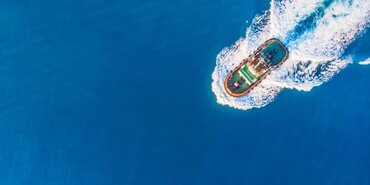TT Talk - Quay crane risks - same old same old

You may think it is Groundhog Day again. TT Club has been highlighting the issue of the boom of a quay crane colliding with a ship for many years. However, it is frustrating to note the continued regularity of this type of incident.
Whether operating a bulk handling facility or on a container berth, one of the most important tools in use will be the crane on the quayside. This asset is highly exposed, due to its position on the waterfront, and probably represents in many places the highest unit cost of any operational asset at the facility.
It costs!
TT Club claims analyses continue to flag quay crane issues as giving rise to the highest cost incidents for ports and terminal operators. This includes mobile harbour cranes (MHC), container cranes, bulk crane loader and unloaders. And collision risks comprise more than 50% of the costs, all of which can be mitigated by different anti-collision technologies, whether in full or part. Furthermore, 20% of the costs relating to quay crane issues arise in boom to ship collisions.
Mitigation
For such incidents, laser technology is capable of preventing the collision entirely. There will be varied reasons why such technology has not been deployed. When an incident occurs, however, it is important to recognise that insurance will not pick up all costs, most pertinently those related to management time or reputational damage. There may be a perception that incidents do not happen, but experience is very clear otherwise.
"There may be a perception that incidents do not happen, but experience is very clear otherwise"
Some might consider that trip wire boom anti-collision systems can be effective. The trip wire is the most common form of boom anti-collision system. While these devices continue to be supplied by crane manufacturers where the specification is not prescriptive, the trip wire system is really only a boom collision detection system. The trip wire may appear cheap, but requires maintenance to keep tension on the wire. Fundamentally, however, the trip wire is ineffective since it is typically only activated about one metre from the boom, whereas a crane moving at full speed may travel 3.5 metres before stopping.
The laser technology is economically viable when looking at the potential costs, damage, delays and injuries caused. These collisions vary from minor impacts with the bridge of the ship to significant damage to the ship (eg. communications systems), structural damage to the boom or crane, and bodily injuries. In extreme cases, this will incur several million dollars of damage, regardless of the operational disruption, management distraction and reputational risk.
Since laser sensor technology to prevent these types of accidents is now well-established, it may seem puzzling that these important assets are not universally protected, eliminating the liability exposure. Unfortunately, the incentive to act may only come after a collision has been experienced. TT Club alone has handled 325 such incidents over the last ten years. All types of quayside crane (including MHC) are at risk - those involved in container, bulk and general cargo operations.
Due diligence
Experience also demonstrates that the sensors need to be installed and commissioned by someone who knows what they are doing, recommended or approved by the manufacturer. There have been instances where the sensors were installed and/or commissioned incorrectly, whether by crane manufacturers, in-house engineering and/or contracted third-parties.
In summary, fitting proven electronic sensor devices to all quay crane booms to prevent them colliding with ships could save the port industry millions of dollars of damage and operational downtime. But remember to have them installed by someone who knows what they are doing.
We hope that you will have found the above interesting. If you would like further information, or have any comments, please email us, or take this opportunity to forward to any colleagues who you may feel would be interested...
We look forward to hearing from you.
Peregrine Storrs-Fox
Risk Management Director, TT Club
- Author
- Staff Author
- Date
- 06/11/2018





